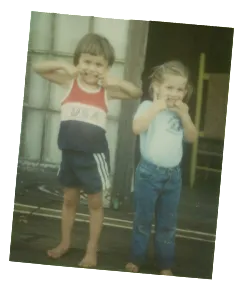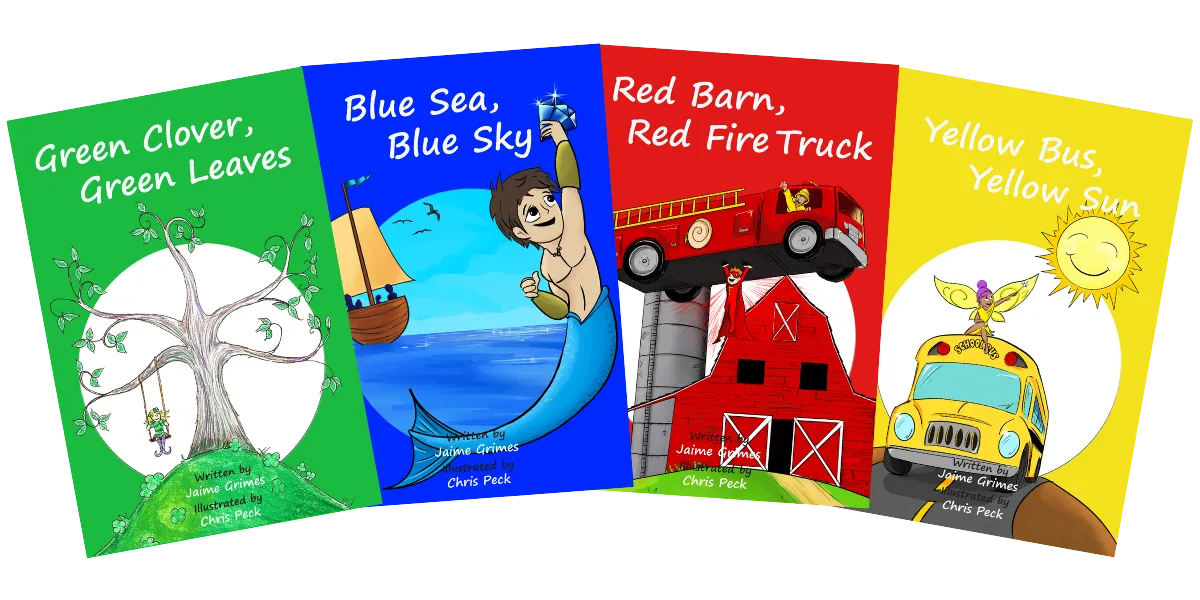Have you ever wondered if your toddler is colorblind?
We did too, until sister and brother Jaime Grimes and Chris Peck — while chatting about their toddlers’ color learning — stumbled upon a scientific finding that few parents and educators know about, even years after its discovery.

The Teach Kids Colors book series is more than a fun set of picture books for children; it’s a unique tool, a science-backed way to teach kids colors.
How do I tell if my child is colorblind?
Have you ever asked yourself this question, wondering if your child can’t see colors?
We did too, until sister and brother Jaime Grimes and Chris Peck — while chatting about their toddlers’ color learning — stumbled upon a scientific finding that few parents and educators know about, even years after its discovery.
Jaime’s 2-year-old son and Chris’ 3-year-old daughter are like most kids; they were taught the colors using objects that can be any color: blue hat, red ball, yellow kite, the list goes on. But just showing them pictures of colors and words didn’t improve their color-recognition skills.
When Jaime and Chris asked their little kiddos to identify the red ball from the other balls, you could see the confusion wash over their faces. “I know they're all balls, but which one is red?”
So like many other parents, Jaime and Chris wondered, “Is my kid colorblind?”
“Our little ones can tell the difference between a ball and a block, so why can’t they tell the difference between red and blue?” they thought.
That’s when Jaime developed a hunch: Could it be that kids are easily confused by the inconsistent pairing of color names to objects?
She began to research an explanation and soon stumbled upon a 2010 Stanford University study that definitively backs up her hunch.
“The learning problem consists in not only learning a word to color mapping, but also in learning the peculiar color ‘maps’ your language uses in the first place. The task is further complicated by the fact that color is ubiquitous in everyday life. At any given time, we are surrounded by a multitude of hues, as we move through a world of faces and places, objects and surroundings. This overwhelming ubiquity is not a feature of other common words, such as nouns. Imagine, for example, that a child is trying to learn to distinguish ‘dog’ from ‘bear.’ The learning problem isn’t so difficult in this case: unless you’re watching Old Yeller, dogs will tend to be seen and talked about in contexts in which bears aren’t present, and bears will tend to be seen and talked about in contexts in which dogs aren’t present. This means that if you’re three, and you’re trying to learn what things out there in the world you might expect to match to the word ‘dog,’ you’ll fast learn that bears aren’t one of them.”
~ Stanford University (2010) ~
Your kids aren’t colorblind; they’re color confused
In other words, most toddlers aren’t colorblind, as their parents fear; they’re color confused.
A few media outlets reported the Stanford scientists’ findings (Why Johnny Can’t Name His Colors, Are Children Colorblind or Color Confused? and How to Teach Your Child Colors), explaining that children learn colors best one at a time and with color-consistent objects like blueberries, green leaves and red fire trucks.
But several years later, their findings are still not put into practice — until now, with the Teach Kids Colors children’s picture book series.
The Teach Kids Colors children’s picture book series takes a different approach: Written in easy-to-remember limericks, each book uses lively characters and vivid illustrations to deliver an uplifting message with a subtle lesson on color. That’s what makes this children’s picture book series compelling — it provides a truly revolutionary way to teach kids colors. One book. One color. One fun story at a time.


Color us excited to connect!
© 2025 Teach Kids Colors